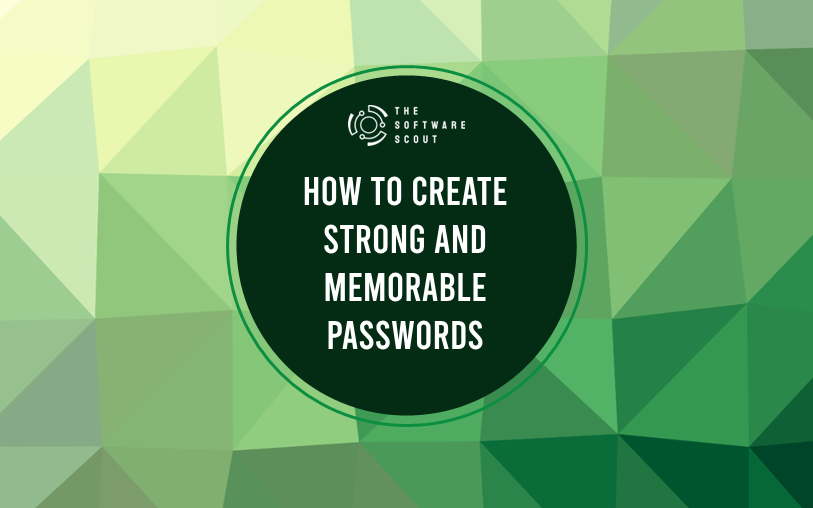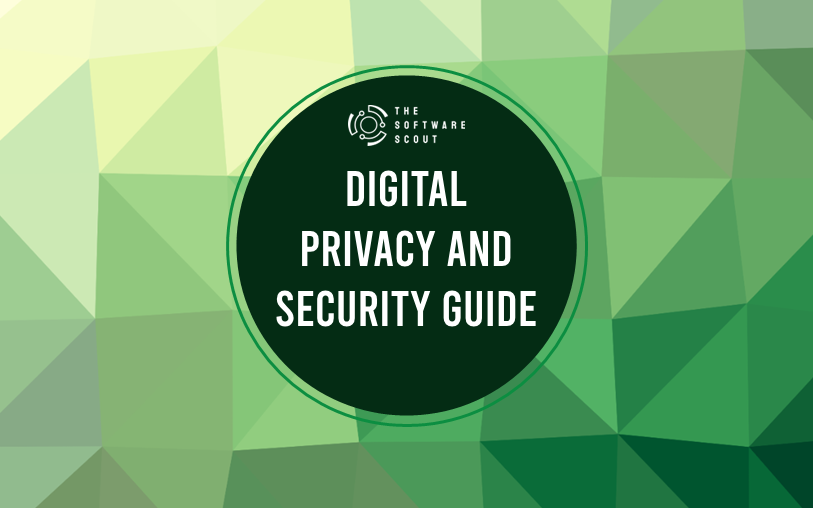Creating strong and memorable passwords is essential for safeguarding your online presence. But the challenge is that many strong passwords are hard to remember, while easy-to-remember passwords often aren’t secure enough. In this guide, we’ll explore actionable strategies to help you create passwords that strike the perfect balance between strength and memorability.

Why Strong Passwords Matter
Before we jump into how to create strong and memorable passwords, it’s worth understanding why password strength is so critical.
- Cyberattacks are on the rise: Hackers use sophisticated methods like brute-force attacks, where they systematically try all possible password combinations until they find the right one.
- Weak passwords are easy to crack: Simple passwords like “123456” or “password” can be guessed within seconds by hackers or automated tools.
- Personal data is at risk: From your bank account to your social media, a weak password can allow attackers access to sensitive information that could lead to identity theft or worse.
What Makes a Password Strong?
A strong password is one that is hard to guess, even with the most advanced hacking techniques. Here’s what makes a password tough to crack:
- Length: The longer your password, the better. Aim for at least 12 characters. Each additional character exponentially increases the number of possible combinations, making it harder for attackers to guess.
- Complexity: Use a mix of uppercase and lowercase letters, numbers, and symbols. This makes the password harder for both humans and machines to crack.
- Unpredictability: Avoid common phrases, sequences, or predictable patterns. Passwords like “iloveyou” or “abc123” are common and easily cracked.
How to Create a Strong Password
Here’s a step-by-step process to create a robust password:
- Start with a base word or phrase: Choose something unique that isn’t easily associated with you (e.g., avoid using family names or birthdates). For example, think of a random phrase like “MountainHike.”
- Add complexity: Incorporate uppercase and lowercase letters. For example, “MountainHike” becomes “MounTainHiKe”.
- Include numbers: Now, add some numbers to make it even harder to guess. You could replace certain letters with numbers that look similar. For instance, “M0unTa1nH1k3.”
- Add special characters: Sprinkle in a few special characters, like “!”, “#,” or “$.” You could do this at the start, end, or even in between. So, “M0unTa1nH1k3!” is an improvement.
- Check strength: Use a password checker to verify how strong your password is. There are plenty of online tools that estimate how long it would take to crack your password.
The Biggest Mistakes People Make with Passwords
Even if you create a strong password, certain mistakes can still put you at risk. Let’s look at some common pitfalls:
- Reusing passwords: Don’t use the same password across multiple accounts. If one account gets compromised, all others using the same password will be at risk.
- Using personal information: Hackers can easily guess passwords based on your public info (e.g., birthdates, pet names). Never base your password on data someone could find on your social media.
- Password hinting: Avoid setting security questions with answers that can be found online. If your password reset question asks for your high school, and that’s mentioned on Facebook, you’re making it easier for attackers.
How to Create Memorable Passwords Without Sacrificing Security
A common frustration is that strong passwords are hard to remember. But the good news is, you can create strong passwords that are also memorable. Here are some strategies:
1. Use a Passphrase
Instead of one word, choose a random but meaningful sentence that’s easy for you to remember but difficult for others to guess. For example, if you have fond memories of hiking in the Rockies, you could create a passphrase like:
- “IHikedTheRockiesIn2020!”
This passphrase is long, includes a mix of uppercase letters, numbers, and symbols, and it’s something memorable to you.
2. Leverage Mnemonics
A mnemonic is a memory trick that helps you recall information easily. For instance, use the first letter of each word in a sentence:
- Take a sentence like: “I love chocolate ice cream on Fridays.”
- Turn it into a password: “IlcicOF!2023”.
You’ve now created a password that’s both strong and personal, making it easier to recall.
3. Substitute Letters with Symbols and Numbers
One simple trick to make passwords both memorable and secure is using numbers and symbols that resemble letters. For example:
- A = @
- S = $
- I = 1
- O = 0
So, a memorable word like “Sunshine” can become:
- “$un$h1n3!”
4. Segment the Password
Another effective strategy is to segment a password into chunks or patterns. For instance, you could choose three smaller, memorable segments and combine them. Something like:
- “Jump-42!Fish-Football”
This password uses a combination of words and numbers in a pattern, making it easier to remember but still very secure.
Should You Use a Password Manager?
One of the best ways to manage strong passwords is by using a password manager. These tools generate and store strong passwords for every account you own, eliminating the need to remember each one. Here are a few reasons why you should consider it:
- Automatic generation: Most password managers can create highly complex passwords that are nearly impossible to guess.
- Storage: They store all of your passwords in one secure place, so you only need to remember the master password to access everything.
- Encryption: Password managers typically use encryption to keep your passwords safe.
Popular Password Managers to Consider
Here’s a look at some top password managers you can use:
| Password Manager | Features | Pricing |
|---|---|---|
| LastPass | Easy-to-use, cloud backup, cross-device sync | Free/$3 month |
| 1Password | Two-factor authentication, family sharing | $2.99 month |
| Dashlane | Password generator, dark web monitoring | Free/$4.99 month |
| Bitwarden | Open-source, encryption, multi-device sync | Free/$10 year |
The Importance of Two-Factor Authentication (2FA)
Creating a strong password is your first line of defense, but it’s not enough. You should also enable two-factor authentication (2FA) wherever possible. This adds an extra layer of security by requiring a second form of verification, such as:
- A code sent to your phone
- A fingerprint scan
- An email verification
Even if a hacker guesses or steals your password, they would still need that second layer of verification to access your account.
Password Rotation: How Often Should You Change Your Passwords?
While creating strong passwords is critical, password rotation is another key part of a secure strategy. But how often should you change your passwords?
- Every 3-6 months: For sensitive accounts like banking, you should aim to change your password every 90 days.
- When a breach occurs: If you hear about a data breach that affects a service you use, change your password immediately.
- Avoid forced changes: Don’t just change your password for the sake of it unless there’s a clear reason. Some studies show that forced frequent changes can lead to weaker passwords, as users tend to choose simpler ones to remember.
Password rotation helps ensure that even if your old password was compromised, hackers won’t be able to access your accounts with it.
How to Handle Passwords for Shared Accounts
In today’s world, it’s common to share accounts for streaming services, family apps, or even business platforms. But how can you maintain security with shared accounts?
- Use unique passwords for shared accounts: While it might seem easier to use one common password for all shared accounts, this creates a security risk. Instead, generate unique passwords for each shared service.
- Leverage password managers with sharing features: Many password managers allow for secure sharing. For example, services like 1Password and LastPass allow you to share a password without revealing the actual password. This feature ensures that both users have access but can’t pass it on to others.
- Change passwords regularly: For shared accounts, rotate the password at regular intervals to prevent unauthorized access, especially if someone is no longer part of the account.
Understanding Password Strength Tools: Are They Really Useful?
Password strength tools have become common, but how useful are they, and should you rely on them entirely?
- Good for guidelines: Strength checkers give a general idea of how secure your password is by analyzing its length and complexity. They can spot glaring weaknesses, such as short lengths or obvious patterns.
- Not foolproof: Some tools focus solely on complexity, ignoring context. For example, a complex-looking password like “P@ssw0rd1!” might pass a strength test but is still vulnerable to attacks because it’s based on a commonly used word.
- Use as a baseline: Strength tools are great for checking the basic foundation of a password, but you should still follow best practices like using passphrases, avoiding predictable patterns, and enabling 2FA.
Key Takeaways for Creating Strong and Memorable Passwords
Creating strong, memorable passwords doesn’t have to be difficult. Here are the key points to keep in mind:
- Long passwords are more secure. Aim for at least 12 characters.
- Mix it up with upper- and lowercase letters, numbers, and special characters.
- Don’t reuse passwords. Use a unique password for every account.
- Consider a passphrase or mnemonic to create something easy to remember but hard to crack.
- Use a password manager to securely store all your passwords.
- Enable two-factor authentication for extra security.
By following these strategies, you can protect your accounts while keeping your passwords manageable and memorable.
Boyd Hudson is a technology writer at The Software Scout with over 15 years of experience in technology roles across the Asia-Pacific region. He covers a wide range of tech topics, from software solutions to emerging industry trends


Pingback: 10 Tips to Protect Your Personal Information on Social Media